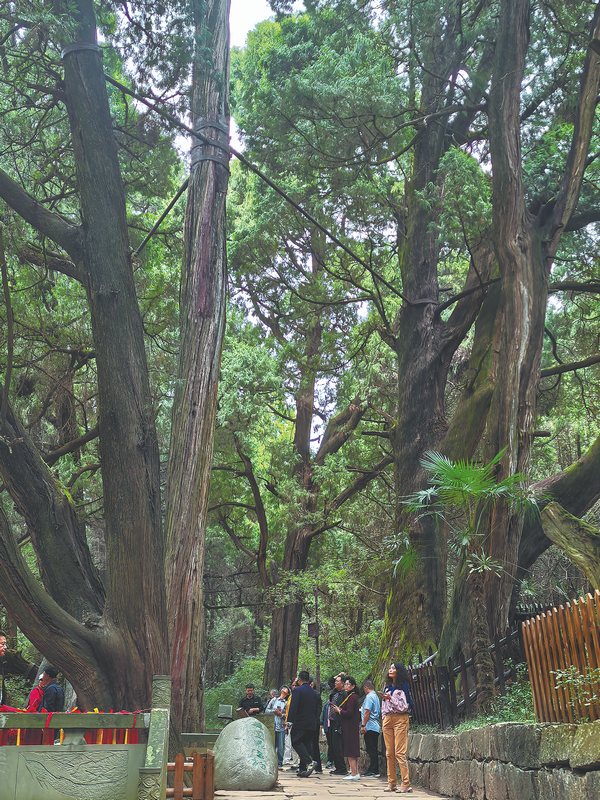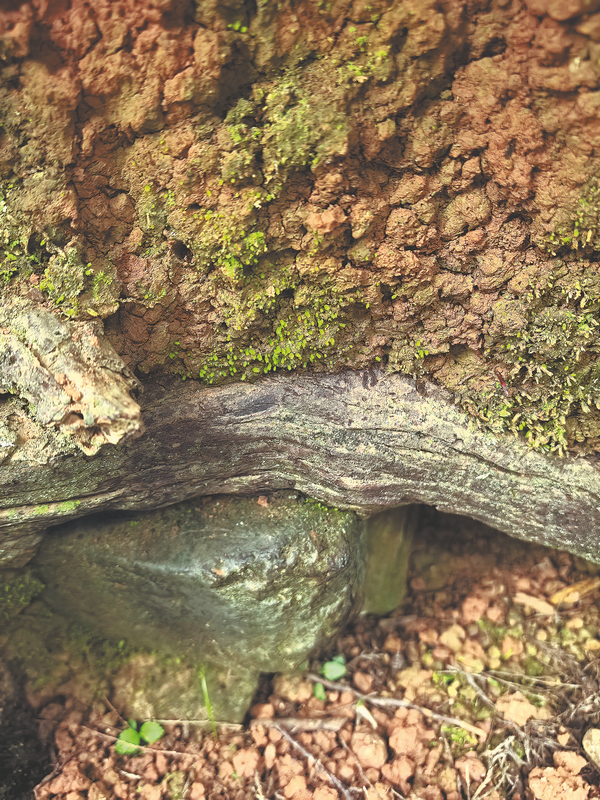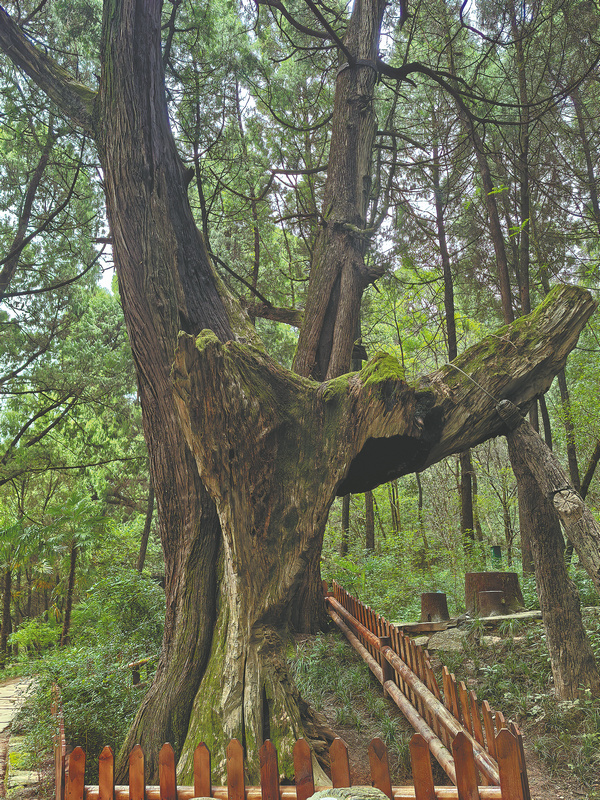A journey to the west

Tourists are dwarfed by cypresses along the Cuiyunlang corridor. [Photo by Liu Lanying for China Daily]
The corridor, a stone-paved and cypress-shaded post road, fascinated Justman, as recorded in her book.
In ancient times, important letters of state were carried by couriers on horseback along the Ancient Shu Roads.
As snow often covered the roads in winter and the summer sun gave the couriers a scorching ride, local officials had cypress trees planted on both sides of the road, to provide shelter and shade all year round.
The planting, which began in the Qin Dynasty (221-206 BC), lasted until the Ming Dynasty (1368-1644). By then, in excess of 100,000 trees had been planted, over 10,000 still surviving to this day.
The corridor has Pu'an town in Jiange at its center, extending to Sichuan's Langzhong city to the east, Zitong county to the west and the Zhaohua district of Guangyuan to the north. More than 7,800 ancient cypresses are in the Jiange section of the corridor.
The average age of the cypresses in this section is 1,050 years, according to a report by the Xinhua News Agency.
Visitors can clearly see bricks stuck in the mud around the roots of several cypresses.
"The bricks were made during the Han Dynasty (206 BC-AD 220)," says Wang Guangming, head of the general office of the Party's publicity department of the Jiangge county committee.
One tree called Adou is special. The tree is named after the pet name of Liu Shan, the last leader of the Shu Dynasty. The cypress is said to be where Liu took shelter from rain on his way to Luoyang, capital of the Wei Dynasty, in 263 after the demise of the Shu Dynasty, according to Wang.
About 70 minutes of car ride from the Cuiyunlang corridor is a plank road built in the Guangyuan section of the Jinniu Shu Road.
When the builders of the roads approached the Mingyue Gorge in what is present-day Chaotian district of Guangyuan, they found it impossible to continue, as the cliffs were too steep. After much thought, they came up with a bold idea — they chiseled holes at three different heights into the cliffs and inserted wooden beams into them.
The upper beams were covered with planks to form a road for pedestrians, and the second and third lower holes held buttresses.
During the Three Kingdoms, Zhuge Liang, an outstanding prime minister of the Shu Dynasty, used the plank road to transport troops to fight against the Wei Dynasty. The plank road was burned down and rebuilt many times during various wars. Now, part of it has been restored to allow travelers to admire this man-made wonder.

A brick at the root of a cypress along the corridor said to be made during the Han Dynasty (206 BC-AD 220) [Photo by Liu Lanying for China Daily]
"When I walked on the plank road, built into the dangerous cliffs above the gushing Jialing River, I was in awe of those who built it," says Wu Dan, a female tourist from Beijing.
About 55 minutes from the plank road is the Zhaohua ancient town in the Guanggyuan section of the Jinniu roads.
To Justman, Zhaohua, a beautiful town in a bend of the Jialing River, a tributary of the Yangtze River, is one of Sichuan's best-preserved towns as she recorded in her book.
History runs like a current through the river as seen in Zhaohua town with its well-maintained buildings that take visitors on the Shu Roads back to the old days and gives them a sense of destination.
Contact the writers at huangzhiling@chinadaily.com.cn

The Adou cypress, named after the pet name of Liu Shan, the last leader of the Shu Dynasty (221-263). [Photo by Liu Lanying for China Daily]
